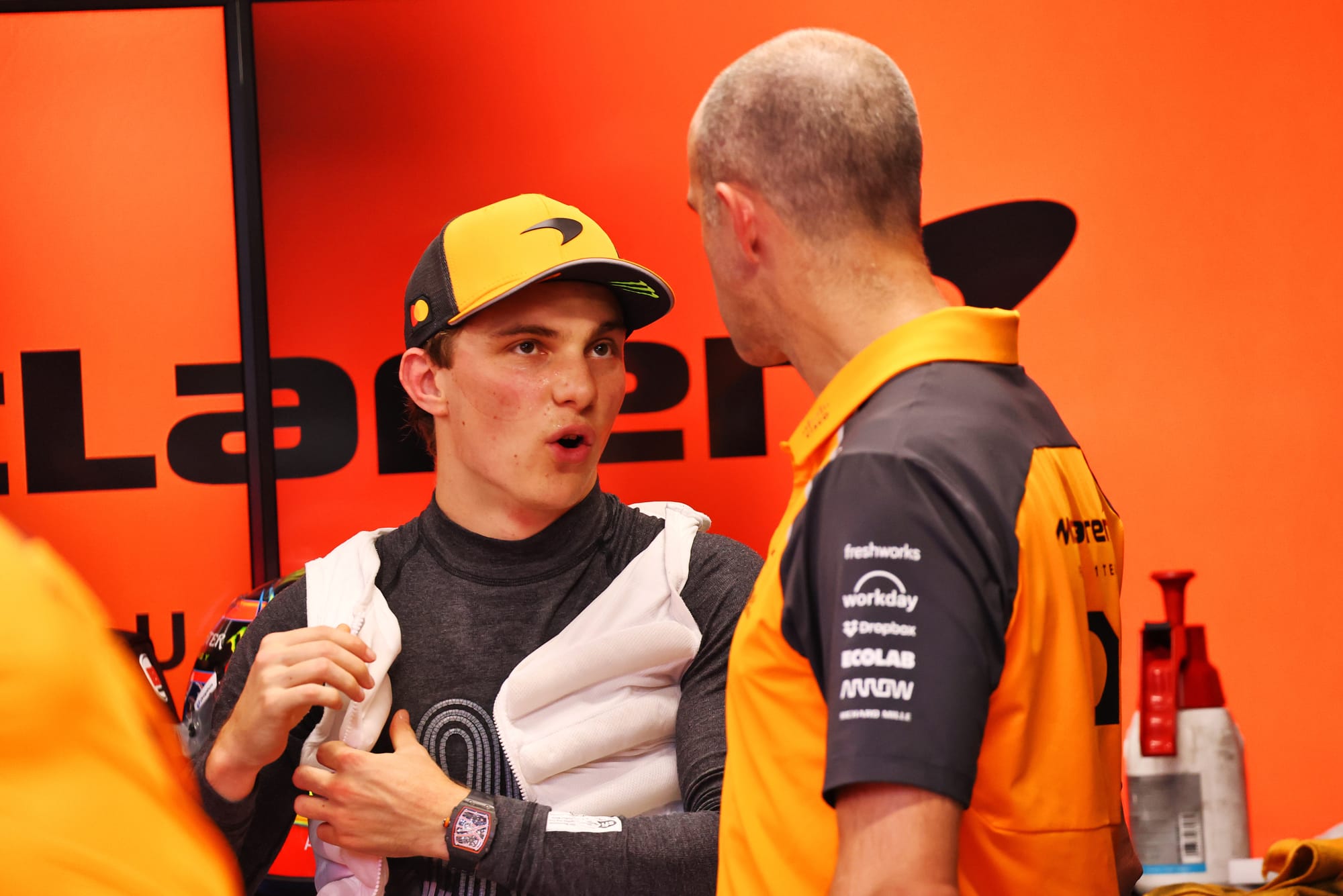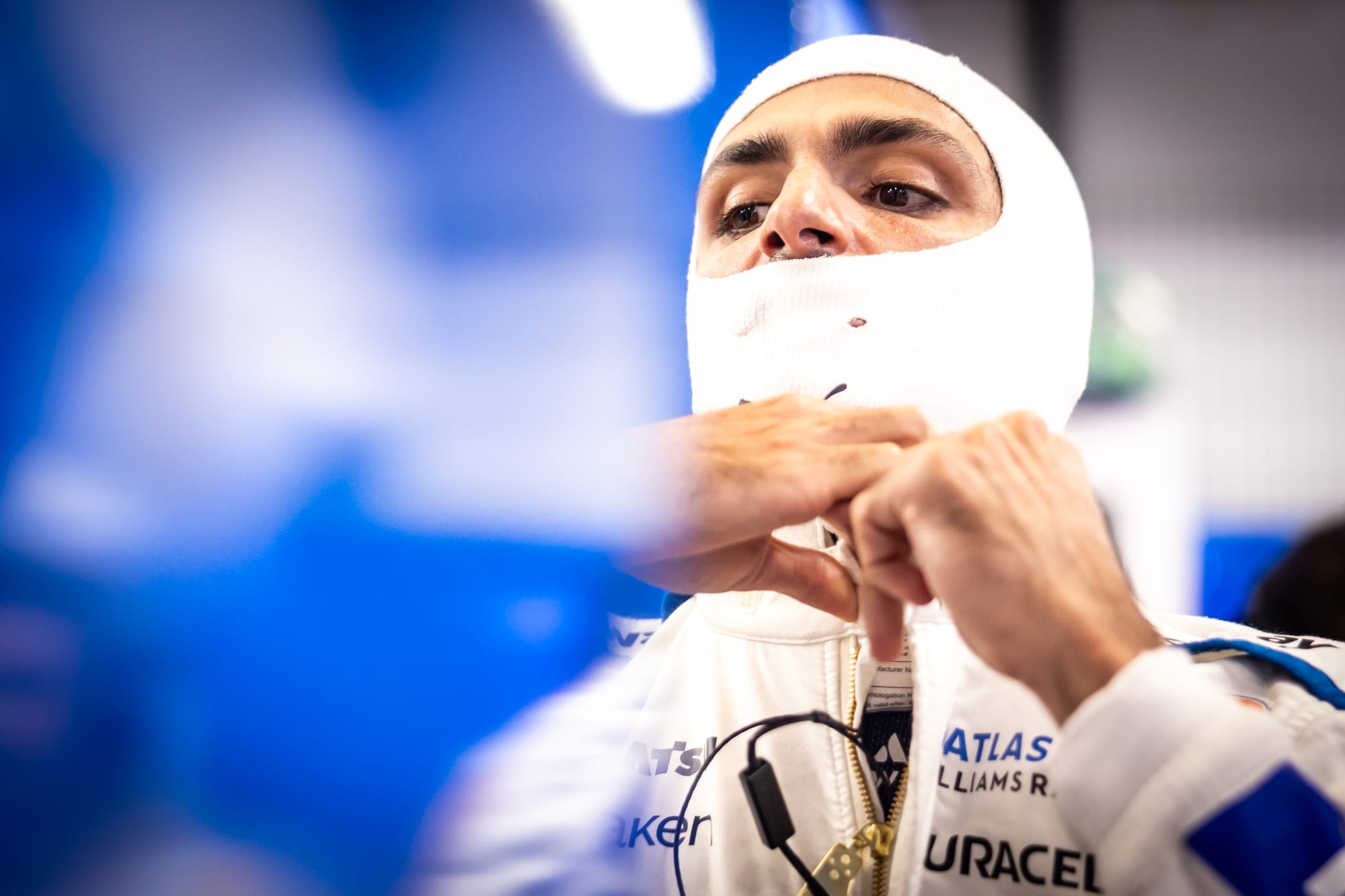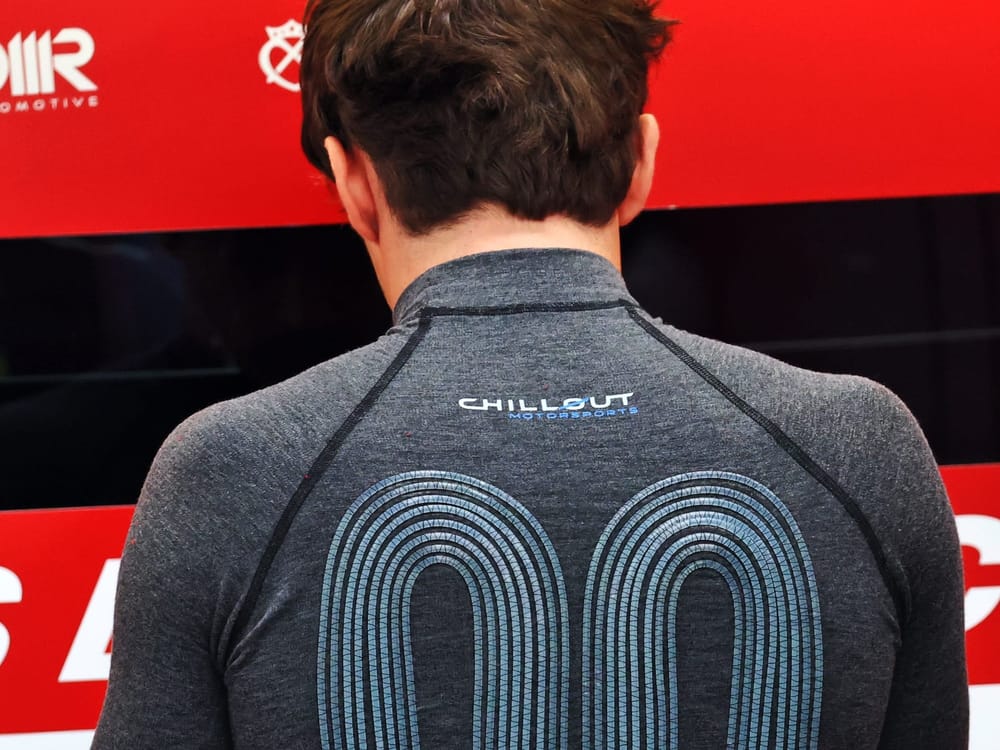The FIA is ready to discuss with Formula 1 drivers what to do with rules regarding cooling vests for 2026 in the wake of criticisms voiced at the Singapore Grand Prix this weekend.
However, despite complaints from several drivers about the devices being uncomfortable and not operating problem-free, motor racing's governing body has made clear it will not back down in its push to make the technology work.
This is because it feels the complaints are a consequence of "tardiness" from some F1 teams in getting their systems up to scratch.
Speaking exclusively to The Race, the FIA's single-seater director Nikolas Tombazis said that cooling vest technology was about avoiding bigger problems.
And, in particular, he said that F1 could not allow there to be a repeat of what happened at the 2023 Qatar Grand Prix, where several drivers required medical attention after battling extreme heat.
"I understand the concern, and I understand they're not happy with how it feels," said Tombazis in response to criticisms voiced this weekend about the cooling vests.
"But we should protect the sport against a situation where, if Qatar happened again, or who's to say that it's not another three degrees hotter, [it cannot run].
"What we would not like to do is be in a position where these things are not properly working, and we're forced to take some extreme action like cancel a race. That would be the worst thing ever."
The heat hazard

This weekend's Singapore GP has been declared as F1's first ever 'heat hazard' race, where rules kick in that mean teams must fit cooling systems to their cars for the race.
However, as part of a concession for this season only, it is up to individual drivers if they want to wear a linked-up cooling vest as well.
If they decide against wearing it, as Max Verstappen already has, then they must carry some extra ballast in the car.
With several drivers feeling that the cooling system is uncomfortable, and others unhappy that it does not last an entire race, calls have been made for a change of plan by the FIA to make wearing the cooling vests voluntary next year as well if and when heat hazards are declared.
At the moment, the regulations state that the vests must be worn next year if conditions demand.
The Race understands that there was some robust debate in the Friday night drivers' briefing in Singapore over what to do for 2026.
While some drivers are hugely in favour of the system, which they are convinced does bring benefits despite its complications, others are more sceptical and are not happy about plans to make it mandatory next season.
One of the most outspoken critics is Verstappen, who said he does not plan to use it and though it was wrong that drivers should be forced to wear something that is so uncomfortable.
"I feel like this needs to be a driver choice," he said. "Of course, from the FIA side, they will always throw it on safety, but then we can talk about a lot of stuff that can be improved on safety - including pit entries in certain places.
"I think that has a bit more priority than a vest in the car because I don't like it. I don't like the tubes that are on you, on your body, with the belts that go next to you."
Verstappen found support from Ferrari duo Charles Leclerc and Lewis Hamilton, who both think that the system should not be forced on drivers in 2026.
Leclerc felt the technology was not at a level where it made sense to force drivers to wear it.
"I don't think the system is quite ready for any teams for it to be mandatory because it can have its downside and can actually feel worse in the car," he said.
"In some scenarios where when the ice is gone, you have no cold water coming into your vest, but you've got hot water coming into your vest and it's not a nice feeling."
Hamilton said: "I don't think it should ever be forced on drivers. They keep saying it's a safety issue, but there's no driver that's ever died from overheating in the race, apart from obviously in flames back in the day.
"It's just getting silly now; that should be our choice to have it."
Not everyone is opposed, though, and Mercedes driver George Russell is one of those who has even used the vest in races where a heat hazard has not been declared, so has taken a weight hit with it.
While the discussions in the drivers' briefing have alerted the FIA to the fact that not all are in favour, and some want it to remain voluntary next season, it has said it will not accept anything that derails its push to get the technology to work.
It said the lessons of the 2023 Qatar GP shows the dangers of what can happen when things get too hot.
Tombazis said the power is in the hands of the teams and cooling system suppliers to improve the technology, as it would be unforgivable to give up on the idea and then end up with a race that cannot be run because it is too hot.
"In Qatar, two years ago, it was pretty bad, but I don't think there's any guarantee that we're not going to have other events like Qatar or maybe even worse," he said.
"With the extreme climates we have, the last thing anyone would want to do is have to cancel a race because it's too hot.
"So I think there has to be a pressure to get the systems to work satisfactorily, so, if needed, people will adopt them.
"But I think it may be true that the threshold where the heat hazard is on/off, the temperature threshold may be a bit over-conservative at the moment, and we may need to adjust."
Tombazis said the responsibility for the current cooling systems not performing at a level that has made all drivers happy had to be taken by those teams that had not committed to getting them to work.
Asked why the systems were behind where they needed to be, Tombazis said it was "a combination of tardiness both from some teams and from the garment manufacturers in sorting it out".
He added: "We kept saying [in] every Technical Advisory Committee meeting, 'This thing is happening, you need to be ready'. And there was quite a lot of sort of slackness - from some people - as I don't want to certainly generalise.
"So when the time came, some of the suits and vests were quite uncomfortable. They had tubes in uncomfortable positions and stuff like that, and some drivers didn't like it."
What happens next?

Tombazis said the FIA did not want to get into a situation where it was "forcing" drivers to wear something they did not like.
That is why it has agreed to speak to them again about the matter. Those talks will include the presentation of medical research documents that highlight the benefits to be had from keeping the body cool in extreme weather.
"We are open to the idea of potentially making it voluntary for next year, not mandatory, but we want to do that once we have discussed with the GPDA [Grand Prix Drivers' Association] a few more medical reports and so on," added Tombazis.
"We will do it based on some slightly more robust facts, rather than just getting a vote in a drivers' meeting, which isn't the best forum to do that."
Williams driver Carlos Sainz saw no problem with the FIA making it voluntary again next season, as he said that those drivers who don't use it when conditions require it will suffer.
"I'm happy not to make it mandatory and the ones that don't want to use it have a disadvantage in the race," he said.
"For me, it's as simple as that. I'm so convinced it works and it helps, even though I've done 10 Singapores without suffering physically and being able to finish it.
"As soon as you start studying a bit of physiology, you understand that there's a performance advantage."



